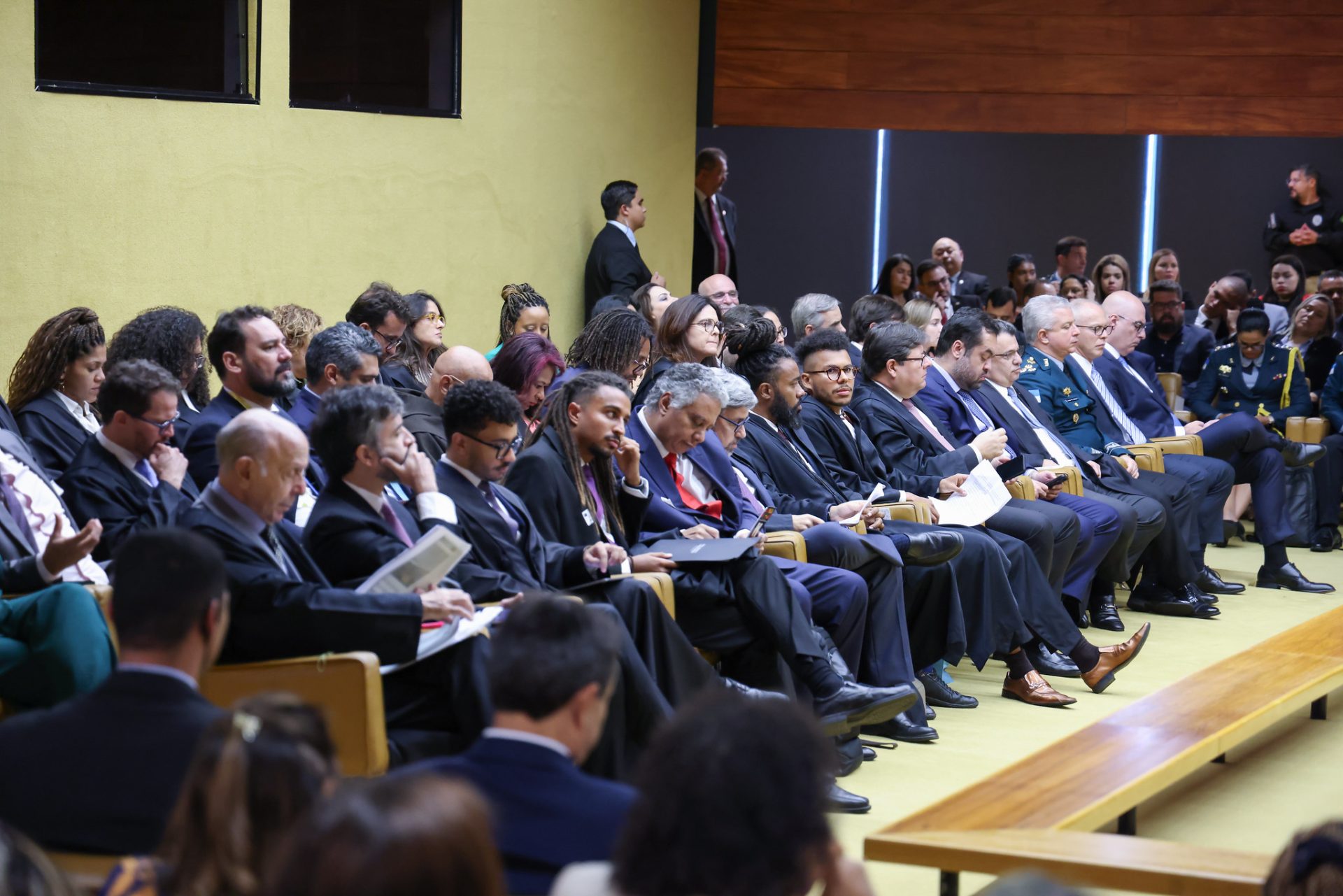75 years of the Universal Declaration of Human Rights: see how the document guarantees rights for all people
International Human Rights Day is celebrated on December 10
 A man walks past an illuminated panel bearing the words of the Universal declaration of Human Rights at the international convention centre in Barcelona during the Euromed summit, 27 November 2005. European and Mediterranean-rim leaders gathered in Barcelona Sunday for a first-ever summit between the regions, but the absence of most Mideast chiefs clouded hopes of relaunching a 10-year-old partnership.AFP PHOTO/ADRIAN DENNIS (Photo by Adrian DENNIS / AFP)
A man walks past an illuminated panel bearing the words of the Universal declaration of Human Rights at the international convention centre in Barcelona during the Euromed summit, 27 November 2005. European and Mediterranean-rim leaders gathered in Barcelona Sunday for a first-ever summit between the regions, but the absence of most Mideast chiefs clouded hopes of relaunching a 10-year-old partnership.AFP PHOTO/ADRIAN DENNIS (Photo by Adrian DENNIS / AFP)
75 years ago, on December 10, 1948, the United Nations General Assembly proclaimed the Universal Declaration of Human Rights (UDHR), a historic landmark in the pursuit of dignity and equality for all people.
The declaration has become a legal foundation for organizations working for human rights. Having a broad international consensus, the text provides solid arguments for international civil society to demand that States consolidate and expand rights.
“In 30 articles, the UDHR covers rights in various civil, political, social, economic and cultural dimensions. It is crystal clear in stating, in its first article, that ‘all human beings are born free and equal in dignity and rights’. There is no room for other interpretations,” explained the international relations expert Camila Asano, executive director of Conectas.
Read more
Despite being a complete and direct text, it is often not respected. Human rights violations persist in every country in the world. Xenophobia, racism, ableism, LGBTphobia, discrimination based on gender or social class are examples of violations against people, groups and communities. Hunger, child labor and the lack of labor rights are other issues that challenge the implementation of the UDHR.
To mark the 75th anniversary of the Declaration, we have put together some questions and answers that explain the importance of the Declaration and how it has directly contributed to guaranteeing rights.
What are human rights?
Human rights are those rights we have simply because we are human. As simple as that. This means that everyone has the right to the most fundamental things, and also equally, without distinction between race, skin color, sex, language, religion or status. In principle, these rights aim to guarantee people’s dignity in an inalienable way, meaning they are not rights that can be restricted or withheld. They are guaranteed. Accordingly, everyone should have access to the same rights, such as the right to education, health and free expression, among others.
When and how did the Universal Declaration of Human Rights come about?
The Universal Declaration of Human Rights (UDHR) emerged after the 2nd World War. The conflict ended in 1945. And in 1945, several countries came together to form the United Nations. The goal was to create an environment of multilateralism that would guarantee peace among nations and strengthen human rights, so that the horrors of the recently ended war would not be repeated. It was in this environment that the Universal Declaration of Human Rights was conceived in 1948, to ensure that no human being would have their rights violated.
Other attempts to systematize what human rights are appeared before the UDHR, with the Declaration of the Rights of Man and of the Citizen in 1789 in France and the Bill of Rights in the United States in 1791, but these were not universal like the Declaration of 1948. In the same year as the UDHR, the American Declaration of the Rights and Duties of Man was approved at the conference that created the Organization of American States (OAS), and this is considered to be the first international human rights instrument.
What is the structure of the Declaration? How many articles are there? What do they say?
The Declaration consists of 30 articles that address a number of factors in guaranteeing rights. The first article is very precise: “All human beings are born free and equal in dignity and rights.” The UDHR also addresses rights such as freedom of association and religious freedom, it condemns cruel, inhuman and degrading treatment, and it also mentions access to health, education, employment and leisure.
How are these rights guaranteed?
The guarantees are secured through international human rights treaties and agreements to which countries are signatories and also through domestic legislation. In the case of Brazil, the Constitution of 1988 became known as the “Citizen’s Constitution” precisely because it contains clauses that guarantee rights that the previous Constitution did not.






